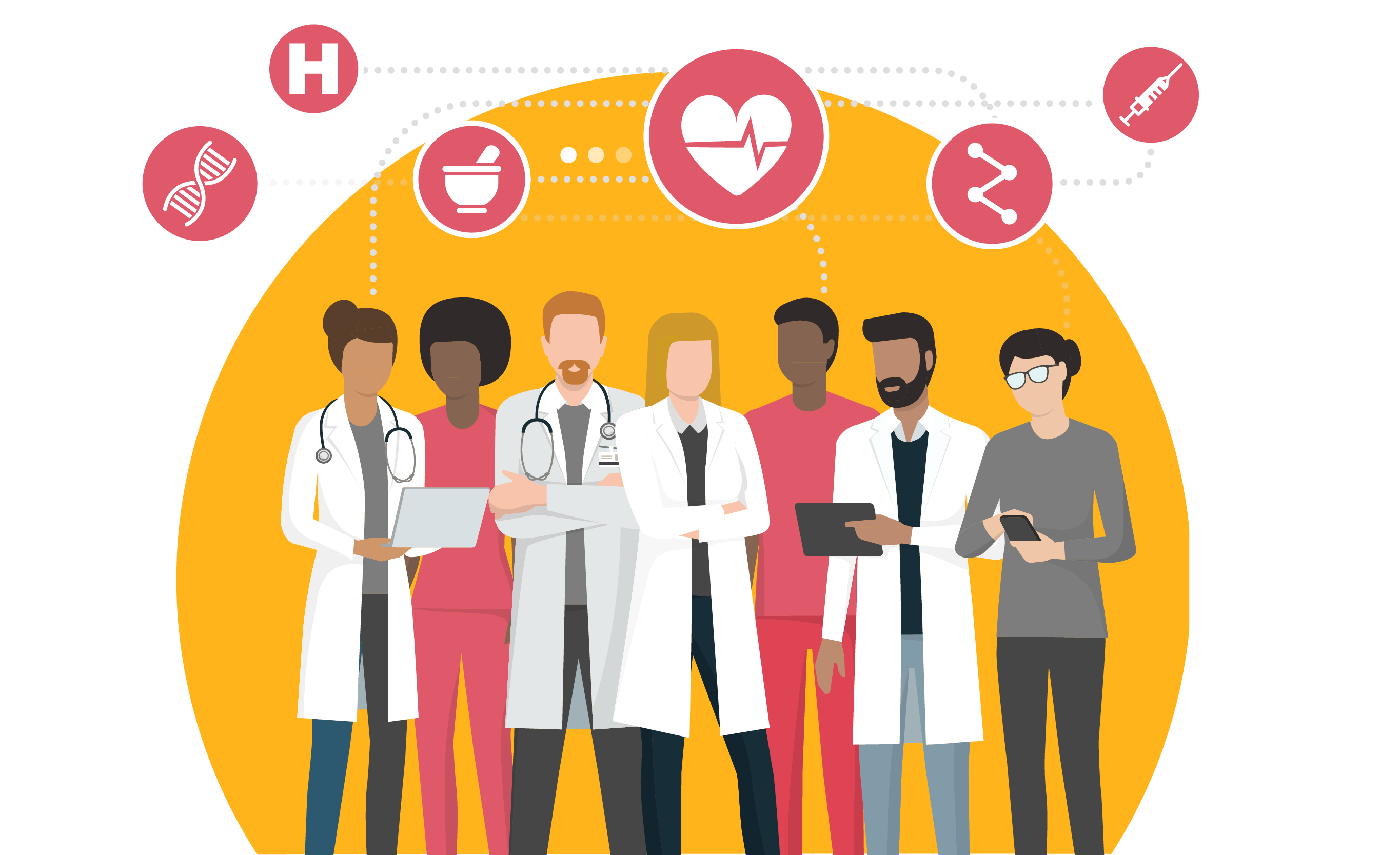
The COVID-19 pandemic has had wide-reaching impact on the health of New Zealanders, and has come at a very real cost. The World Health Organisation reports that 92% of countries have had care disrupted as a result of COVID-19 and, on average 45% of services were impacted, and Aotearoa is no different.
Responding to the unprecedented public health measures needed to manage the COVID-19 pandemic has impacted health services already under strain. The response to outbreaks in 2020 and 2021 resulted in significant elective backlogs. Childhood immunisations – which are a critical pillar of care in the first 1,000 days of life – have declined, particularly for Māori and Pacifica whānau. Mental wellbeing is emerging as a key issue requiring dedicated focus with particular need to support young people. The wider societal impacts of the pandemic on education, incomes and job security will have tangible consequences for the health and wellbeing of New Zealanders, and will likely exacerbate existing health inequities.
As the system responds to the 2022 outbreak, we can anticipate further disruption, with consequential impacts on screening and diagnostics, elective care and subsequent impacts of COVID infection and long COVID.


Gains made during the pandemic response
There are lasting benefits and insights into the way the health system has adapted at pace and scale to respond to the challenges presented by the pandemic.
These significant gains are crucial to informing the health system recovery. Through 2020 and 2021 the public health response, including contact tracing, vaccination and testing demonstrated the strengths and capabilities of our system, including:
- Deepening engagement and partnerships with community partners to build trust and create effective local solutions that address inequities
- A data-driven and science-informed approach
- Investment in rapid development and deployment of digital tools and platforms that enable quality data flows
- Service delivery models enabled by flexible and pragmatic policies to ensure responsiveness to local communities
Challenges that remain
Over and above COVID-19, the existing challenges for health remain and include:
- Population health inequities
- Burdens and pressures associated with an ageing population
- Rising comorbidities
- Supply pressures associated with workforce and infrastructure
These are perhaps more pertinent than ever as the system now must also accommodate ongoing uncertainty and demand fluctuations associated with COVID-19.



As Aotearoa now looks to the future, there is a unique opportunity to leverage the strengths of our COVID response and apply the insights to facilitate a strong and sustainable recovery.
We’ve identified four key pou (pillars) that provide the foundations for this.
- Pou 1: Community partnership and engagement
- Pou 2: A sustainable and resilient workforce
- Pou 3: Expanding the use of data to enable efficient decision making and delivery
- Pou 4: Embedding new care models
Pou 1: Community partnership and engagement
Deep relationships that create platforms for community leaders to champion the cause build trust in the system, and the pandemic has demonstrated the value in partnership and engagement at all levels.
Effective community partnerships
Communities know themselves well, therefore allowing local providers and communities the space to identify and communicate needs, and direct resources and services, delivers better services and outcomes. Communities and providers have been thinking this way for some time, however the pandemic created a more permissible funding and authorising environment for them to operate in. Services that may have once required funding streams from three different agencies – and the associated contracting and reporting burden – were lifted to enable organisations and networks to get on with the critical task at hand.
A significant shift in commissioning strategies, and a cohesive commissioning approach across government, would create the space and empower communities to deliver to a greater extent. The current health sector reform, which includes refocusing service delivery models around localities, puts the onus on the new commissioning system to create the platform. This will require the system to leverage and build on the significant investments made in local organisations and networks over the last two years, rather than reverting to the pre-pandemic arrangements.
Community engagement
Community engagement early in the development of strategy and policy is also critical, and significant changes are already underway. Government organisations are working through how a true partnership under Te Tiriti can be brought to life, and the new Whaikaha Ministry of Disabled People is considering how co-governance will look and operate.
A clear strength of Aotearoa’s response was also the clear and comprehensive public health messaging, coaching the public through a complex and constantly changing risk landscape. It was met with a willingness of the population to act together for collective good and embrace action for change.
Leveraging the momentum gained in normalising health conversations during COVID will provide lasting benefits. mpowering and trusting people to be part of the conversation will develop local autonomy and sense of self-efficacy, which will have real benefits.
True engagement and greater transparency builds trust and understanding, and creates a better political and public environment for the system to recover and transform.
Pou 2: A sustainable and resilient workforce
The health and disability workforce have been the heroes of the pandemic across the world. However, this is a workforce under pressure, with significant shortages reported across specialists, general practice, nursing, midwifery and community workforces creating a cycle of burnout perpetuating the problem.
Building a sustainable workforce
In its response to COVID-19 the system took swift actions to develop a new workforce, create flexibility and embed new care modalities. New digital platforms and tools were developed, launched and iterated, which required clinicians and the wider workforce to work differently.
Across testing, contact tracing and the vaccination programme significant effort went into identifying new staffing models and workforces, and responding with appropriate training and education pathways to build capacity and capability. Particular effort was put into ensuring that the workforce reflected local communities, supporting relationship building and improving trust.
The pandemic created a platform for change and pushed the envelope of what is standard practice or considered achievable. While the pace, and requirements and demands have exacerbated burnout and change fatigue, there are lasting lessons for the sector to consider around supporting the workforce with new digital tools, creating pathways for cross disciplinary teams and cross training of the workforce.
Creating a resilient workforce
The issues of burnout and workforce shortages are immense, and being faced across the globe.
Success lies in developing a strategy that reflects the context in Aotearoa, leveraging global insights and best practice.
Across the health workforce, Māori and Pacific people are under-represented and ensuring the workforce is representative of Aotearoa is critical to building the trust and confidence of the public. It also ensures that service design and delivery are culturally responsive.
A short term strategy and plan with tactical actions to mitigate immediate burnout risks, and supporting the workforce through the ongoing disruptions of reform and COVID implications will be important.
A comprehensive review of the workforce, identifying urgent gaps and developing tactical pathways to improve immediate gaps in the short term is an immediate action that can be taken.
Pou 3: Expanding the use of data to enable efficient decision making and delivery
The pandemic highlighted challenges and barriers to the sector’s ability to access granular, real time data.
Importance of consistent data
Since early in 2020 Manatū Hauora Ministry of Health has worked with the sector to rapidly prototype, deploy and iterate national platforms to manage activities, and provide nationally consistent data across the system. Central to this is the capability to provide a view of performance nationally, regionally and at point of care.
Consistency at a national level – particularly data – was one of the key benefits of these platforms during the COVID response. Data provided efficiencies for training and education of the workforce, and increased the flexibility of the workforce, as experience was transferable across the platforms and providers. For other system platforms, it simplified interoperability decisions.
This contrasts significantly with the ability to assess ICU and hospital bed occupancy rates. An ongoing pain point has been the lack of technology in place for the collection, collation or reporting in real time on the national bed occupancy and ICU occupancy. As a result, there has been an ongoing manual collation effort required to achieve a national view.
It remains a technical challenge to share health information in bi-directional manner across primary and secondary care settings, which impacts on quality of care and experience for clients, and is a source of frustration and burden for the workforce.
Data driven decision making
The COVID-19 contact tracing, testing and Vaccination Register platforms provide lessons for upcoming investment in technology and how smart technology decisions can enable a data-driven system.
The presence of high quality digital enablers and data created the space for responsive delivery excellence on the ground. Visibility over performance enabled best practice to be identified, shared and scaled.
Where areas with challenges or inequities were found, it provided opportunities for targeted investment and support, and created the space for testing new approaches with clear and rapid feedback loops.
When there is consistent data, it is easier to use and decision making becomes more accurate, including the adoption of national standards.
As the system looks to recover and move beyond the pandemic, investment in technology offers avenues for quick wins to create capacity and improve efficiency. Investment and implementation decisions should consider the lessons outlined here; as technology is the platform and enabler for creating the nationally consistent data for future investment decisions and service delivery planning.
Pou 4: Embedding new care models
The pandemic has disrupted some service delivery, and expedited the transition to new models in order to maintain care during lockdowns, and manage contact tracing, testing and vaccination delivery.
New care models
The lockdowns resulted in a rapid transition and uptake of online primary care consultations and therapy which, prior to COVID-19, had generally been under-utilised.
The pandemic created a rapid culture shift, normalising digital health channels that previously had limited adoption.Contributing to this were existing commissioning arrangements and health workforce attitudes. Strong investment in national telehealth provider, Whakarongorau Aotearoa, meant the organisation was able to respond to the COVID-19 need. Success can be measured in its ability to meet demand, and the organisation reported a 435% increase in interactions and a 195% increase in call time in 2021.
While online services and telehealth aren’t appropriate in all contexts, such as communities without digital options, they’re a useful tool to be incorporated or considered across the services and models. Conscious effort will be required to ensure that the gains made over the last two years are embedded.
Service delivery innovation
Pre-pandemic health systems around the world have been considering how to shift health care from higher acuity settings into the community.This becomes increasingly important when considering the future implications of COVID-19, with recurring waves resulting in higher hospital utilisation.
A key challenge is how to maintain COVID care without impacting on elective procedures. This will require a review and redesign of how interdisciplinary teams can be leveraged to meet community and client needs while managing supply constraints, and include primary and community settings and services.
We recommend a comprehensive stocktake of services and activities across the country to determine capacity and quality as the starting point for a recovery plan. An equity lens must be applied to all analysis to ensure that subsequent decisions don’t exacerbate existing issues. This approach is an opportunity to create effective baselines and develop pragmatic capacity plans. It should inform decisions about potential tactical and strategic approaches which could include investment in centres of excellence for high volume conditions or services, or dedicated ‘super clinics events’ to create operational efficiencies

Looking beyond COVID-19
As Aotearoa emerges from the pandemic response and transitions to a new system, it’s crucial that the gains from the past two years COVID-19 response are leveraged. The four pou outlined in the document are inherently linked, therefore strategic planning and service design need expertise and consideration.
Aotearoa and its health and disability system have learnt a lot from the COVID-19 experience, and were successful in the initial response. This highlighted the real strengths of culture and system, including the ability to engage authentically, be agile and responsive, and a willingness to try new things. Understanding and implementing these unique strengths will only strengthen the future system.
About us
Our Hauora practice is credibly entrenched in New Zealand’s health sector, working closely with public and private hauora agencies, funders and providers to achieve outcomes that contribute to sustainable and equitable healthcare. We bring a wide range of capabilities and important insights from working with a large number of health and wellbeing organisations, and have a broad understanding of the health ecosystem.
We understand health and wellbeing from the inside out and bring a unique perspective through the diversity of our people, their experiences and expertise. We have the resources and expertise to assist your organisation, please contact us to discuss how we can support you.












